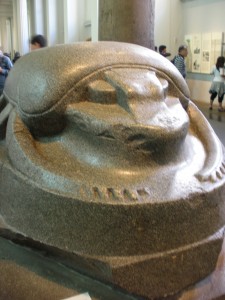One thing that I have been noticing a lot about London is the accessibility and services available for people who are disabled or handicapped in some way. Much like what you would tend to expect from American cities, there are handicap accessible entrances, ramps, elevators, and automatic doors leading to many of the major museums and tourist attractions around London. However, I have observed less-than-wonderful wheelchair-friendly services in the Tube stations.
Looking at the Underground map, there are only 9 stations within Zone 1 that have step-free access from the platforms to the outside world. Now, I grant that the map shows that the bigger stations or those with rail stations attached tend to have wheelchair accessible facilities, but there are still a number of problems. First, there’s the gap to mind, which while it is not beneficial to the elderly or buggy-pushers, seems to be a very large potential problem for people in wheelchairs and using crutches to get over. Secondly, with the current construction projects occurring at many of the major Tube stations, some facilities that would normally be easier to maneuver around are currently out of order. The only saving grace of the transport system for those movement-impaired seems to be the bus system. From what I have noticed of the buses, the majority of them are fitted with a hydraulic system that either allows the bus to be lowered curbside or a platform for a wheelchair.
Despite my criticisms of the Tube as a vehicle of transport for people in wheelchairs, London has managed to greatly surprise me in the leaps-and-bounds of services for other handicapped peoples. When I was at the British Museum the other day, I noticed a sign that mentioned that there is a Touch Tour for people who are blind or visually impaired. I’ve never encountered anything like this before, but think that it is a brilliant idea! This tour allows them to touch specific objects in certain sections of the Museum in order to get an idea of what the art from that culture “looks” like. Accompanying these objects were plaques in Braille explaining the object they were “looking” at.

Scarab from the Egyptian section of the Museum - on the Touch TourSign for the Blind Touch Tour
